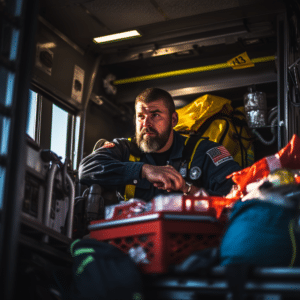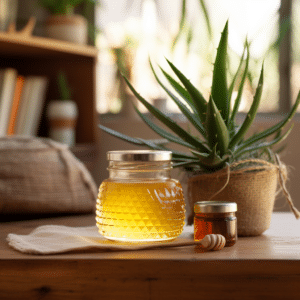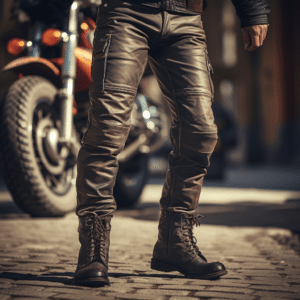Treating a Motorcycle Burn – Tips & First Aid
Last updated Wednesday, February 19th, 2025

Did you know that a motorcycle burn can be much more than just a painful inconvenience? It can lead to severe injuries, lifelong scarring, and even disability if not treated properly. As a motorcycle enthusiast, it’s crucial to arm yourself with the knowledge needed to prevent and manage these burns. We’ll cover the different types of motorcycle burns, immediate actions for treatment, home remedies for mild burns, proper wound care, and safety precautions to prevent burns. Read on to become a well-informed rider, ready to tackle any burn situation you may encounter.
Understanding Motorcycle Burns
Motorcycle burns can be classified into three types: first, second, and third-degree burns. Each type of burn has distinct characteristics and requires different treatment approaches. Understanding how to identify and treat each type of burn is paramount in avoiding complications, such as infection and permanent scarring, especially in cases of motorcycle exhaust burns and exhaust pipe burns.
First-Degree Motorcycle Burns
First-degree burns affect only the outermost layer of skin and are characterized by redness, mild swelling, and pain. These burns can be caused by various factors, including exhaust pipe burns, friction burns, and thermal burns from hot surfaces.
The good news is that first-degree burns typically have a short recovery time of 2-3 days, and basic first aid can provide relief and promote healing.
Second-Degree Motorcycle Burns
Second-degree burns are more severe than first-degree burns, affecting both the epidermis and dermis layers of the skin. These burns are characterized by deep redness, pain, swelling, and the presence of blisters. Blisters result from severe exhaust pipe burns and can be a sign of an infection if they exhibit unpleasant odors, increased swelling, or pus.
Recovering from a standard second-degree burn may take up to three weeks. Following the doctor’s instructions during this period is vital for optimal recovery. Here are some important steps to take:
- Monitor the healing process and seek medical attention if signs of infection appear or if the burn affects a significant skin area.
- Practice proper wound care, such as keeping the burn clean and covered with a sterile dressing.
- Take any prescribed medications, such as antibiotics or pain relievers, as directed.
- Follow any recommended physical therapy or rehabilitation exercises to restore mobility and function.
- Attend follow-up appointments with your doctor to ensure complete recovery and minimize the risk of complications.
Third-Degree Motorcycle Burns

- White or blackened skin
- Massive amounts of swelling
- A leathery texture
- A lack of pain due to nerve and tissue damage
Recovery time for third-degree burns can vary significantly. It could take as little as several weeks or as long as several years, depending on the severity of the burn.
Third-degree burns require immediate medical attention, as improper treatment can lead to severe complications, such as infections and life-threatening conditions. Medical treatment for these burns may include:
- Applying clean, cool water
- Taking appropriate pain relievers
- Administering antibiotics to prevent or clear infection
- Dressing the wound correctly
- Possibly undergoing a skin graft or skin substitute for healing
Immediate Actions for Motorcycle Burn Treatment
In case of a motorcycle burn, swift action and adherence to the appropriate treatment steps is necessary. Immediate actions for treating motorcycle burns include cooling the burned area, assessing the damage, and cleaning the wound. These actions can help minimize the severity of the burn, reduce the risk of infection, and promote faster healing.
Cooling the Burned Area
Cooling the burned area with clean, cool water is the first step in treating a motorcycle burn. It is recommended to apply cold water for 5 to 10 minutes to provide immediate relief. Avoid using ice or cold water, as it could cause further damage to the tissue.
Cooling the burn helps reduce inflammation, prevents further damage to the skin, and provides relief from the initial pain.
Assessing the Damage
Once the burned area has been cooled, assessing the severity of the burn to determine the appropriate treatment becomes a necessary step. Doctors utilize a classification system based on degrees to assess the severity of a motorcycle burn, with higher degrees signifying more severe burns. You can also estimate the extent of the burn area using the palmar surface or palm method. It is essential to seek medical attention for more severe burns.
Sometimes, a motorcycle burn may be more severe than initially perceived. Watch for signs such as:
- The affected area being bright red, swollen, and shiny
- The presence of blisters on the burn
- The burn being painful to the touch
- The burn showing signs of bleeding or exposed tissue
If any of these signs are present, seek medical attention immediately.
Cleaning the Wound
Cleaning the wound to reduce the risk of infection is the next step after the burn’s severity has been assessed. Here’s how to clean the burn:
- Use a mild soap and water solution to gently clean the burn, taking care not to cause further damage to the burned area.
- After cleaning, rinse the wound with cool or lukewarm water.
- Dry the wound with a clean cloth.
Proper wound cleaning is crucial, as it helps remove debris and bacteria from the burn site, thereby preventing infection and promoting the healing process. If the wound is not cleaned properly, there is an increased risk of infection, which can lead to complications and delayed healing.
Home Remedies for Mild Motorcycle Burns
For mild motorcycle burns, such as first-degree burns, some home remedies can provide relief and promote healing. Over-the-counter pain relievers, aloe vera, and honey are popular options for treating mild burns at home.
Over-the-Counter Pain Relievers
Over-the-counter pain relievers, such as acetaminophen (Tylenol), ibuprofen (Advil, Motrin), and naproxen (Aleve), can be safely used to relieve pain caused by burns. These medications play a role in managing pain and inflammation in burns by reducing pain signals and decreasing inflammation in the affected area. They provide temporary relief and improve comfort during the healing process.
Adherence to the instructions on the packaging or those provided by a healthcare professional when taking over-the-counter pain relievers for burn pain is necessary. Exceeding the recommended dosage or frequency of administration is not advised, as it may cause side effects.
Aloe Vera

Using aloe vera on a burn wound can not only offer pain relief but also accelerate the healing process. Research indicates that burn sites treated with aloe vera gel healed completely in a shorter period of time compared to other treatments.
Honey
Honey is another natural remedy that can be helpful for treating mild burns. Its antibacterial and anti-inflammatory properties can help prevent infection and reduce inflammation in burns. To treat a burn with honey, apply honey directly to the burn or mix it with other ingredients, such as aloe vera or coconut oil, which may help reduce inflammation and promote healing.
Applying honey to a burn wound can help promote healing. Here’s how to do it:
- Use a sterile pad or gauze to apply the honey to the wound. Direct application may introduce bacteria, so it’s important to use a barrier.
- Apply 15-30 ml of honey to the wound or soak the gauze in honey before applying it.
- Change the dressing regularly to maintain cleanliness and promote healing.
Proper Wound Care for Motorcycle Burns
Proper wound care plays a significant role in treating motorcycle burns. By following the appropriate steps for bandaging, monitoring for infection, and scar prevention and treatment, you can reduce the risk of complications and ensure the best possible healing outcome.
Bandaging the Burn
To ensure proper bandaging of a burn wound, follow these steps:
- Cover all exposed burn areas with a non-adherent burn dressing.
- Cover the area with dry sterile gauze.
- Secure the bandage loosely to prevent pressure on the burned skin.
- Ensure the bandage covers the burn completely to prevent air exposure, reduce pain, and protect the wound.
Using sterilized bandages for burn wounds is crucial, as they help maintain the sterility of the wound and avoid the introduction of bacteria. Regularly changing the bandages also ensures the wound remains free from contaminants and promotes faster healing.
Monitoring for Infection
Infections are a common and serious complication of burns. Monitoring the burn closely for any signs of infection is key. Look out for:
- Increased pain
- Swelling
- Warmth
- Redness
- Dark streaks in the skin leading away from the wound
If any of these signs are observed, it is essential to seek medical attention immediately.
Infections in burn wounds can lead to severe complications, such as:
- Increased thickness of the burn
- Alteration in color of the burnt area or surrounding skin
- Swelling with purplish discoloration
- The risk of sepsis and even death
By seeking medical attention promptly, you can reduce the risk of infection and ensure proper healing.
Scar Prevention and Treatment
Addressing scars caused by exhaust pipe burns promptly can prevent long-term complications and promote optimal healing. To treat exhaust pipe burn effectively, some treatments for preventing and mitigating scars from motorcycle burns include:
- Silicone gel-based therapy
- Silicone sheet dressings
- Massage techniques
- Laser treatment
It is crucial to consult with a healthcare professional for personalized advice and treatment options for scar prevention and treatment. By following their guidance, you can minimize scarring and ensure the best possible healing outcome.
Safety Precautions to Prevent Motorcycle Burns
Preventing motorcycle burns holds equal importance to knowing how to treat them. By following safety precautions, such as wearing protective gear, maintaining a safe distance from exhaust pipes, and educating passengers about the risks of burns, you can minimize the chances of encountering a burn situation on the road.
Wearing Protective Gear

- Long pants
- Boots
- Jackets
- Gloves
These items should be made from heat-resistant materials such as leather or specialized heat protective shields.
Brands like BurnJacket, Urban Motorcycle Clothing, and DuPont™ Kevlar® specialize in burn-protective motorcycle gear, providing riders with added peace of mind and protection. Remember, the right gear can make all the difference in preventing burn injuries and ensuring a safe and enjoyable ride.
Maintaining Safe Distance
Since motorcycle exhaust pipes can become extremely hot and cause burns if touched, maintaining a safe distance is critical. Exhaust pipes also emit toxic gases and fumes, which can be harmful if inhaled in close proximity. The recommended distance to maintain from motorcycle exhaust pipes is at least one inch.
By keeping a safe distance from exhaust pipes while riding or working on a motorcycle, you can prevent exhaust burn and ensure a safer experience on the road. Always be mindful of the location of the exhaust pipe and other potential hazards that could affect your safety.
Educating Passengers
Educating your passengers about the risks of motorcycle burns and how to avoid them is a responsibility of every motorcycle rider. Ensuring that your passenger is wearing appropriate protective gear and is aware of the location of the exhaust pipe can help prevent burns.
In addition to informing your passenger about the risks of motorcycle burns, teach them essential safety precautions when riding on a motorcycle, such as how to mount and dismount the bike properly, maintaining a secure grip while riding, and communicating effectively with the rider. By educating your passengers, you can create a safer environment for both you and them on the road.
Frequently Asked Questions
How do you treat a burn from a motorcycle?
To treat a burn from a motorcycle, run cold water over the wound for 5-10 minutes to clean off any contamination, then dry gently with patting motions and cover with sterile gauze. Apply antiseptic regularly until the wound is dry.
What is a motorcycle burn?
A motorcycle burn is an injury caused by chemicals, fire, or hot metal parts which can penetrate skin, muscle, and bone. It results in superficial damage to the skin, and is often painful and dangerous.
How long does a motorcycle burn last?
Most motorcycle burns will heal on their own within a few weeks, while severe burns may require surgery.
What are the main types of motorcycle burns?
The main types of motorcycle burns are first, second, and third-degree burns, each with their own characteristics and treatment needs.
How can I prevent motorcycle burns?
To avoid motorcycle burns, wear protective clothing such as long pants and boots, maintain a safe distance from exhaust pipes, and educate passengers on the risks of burns.











